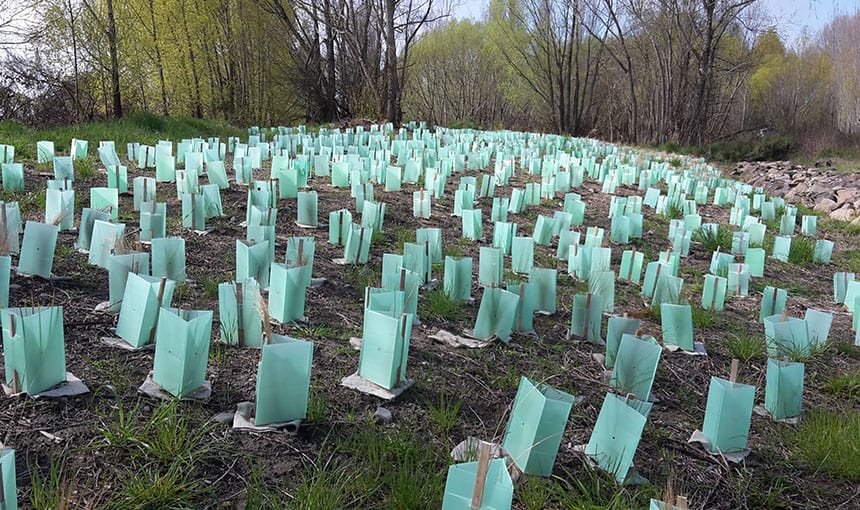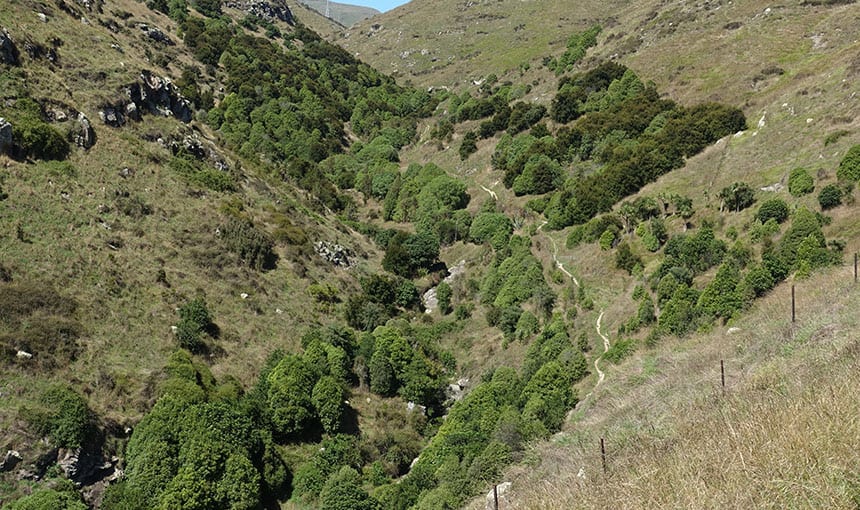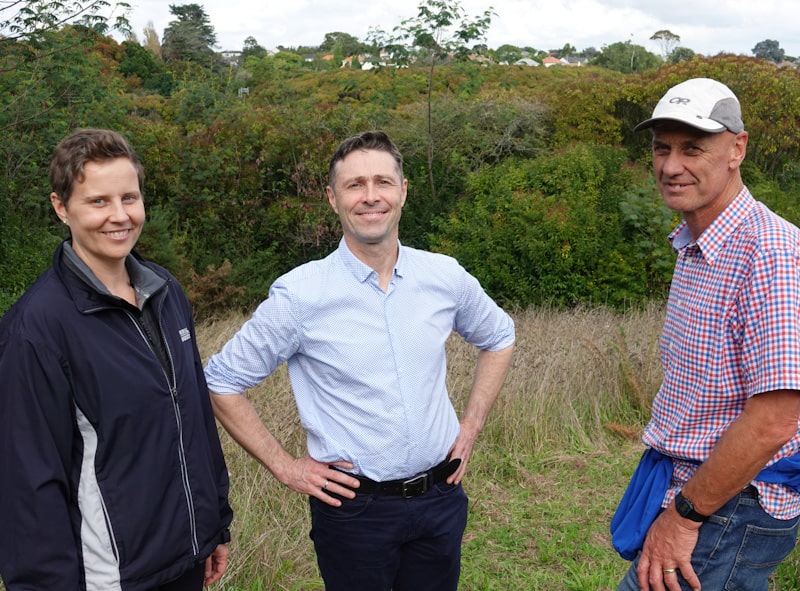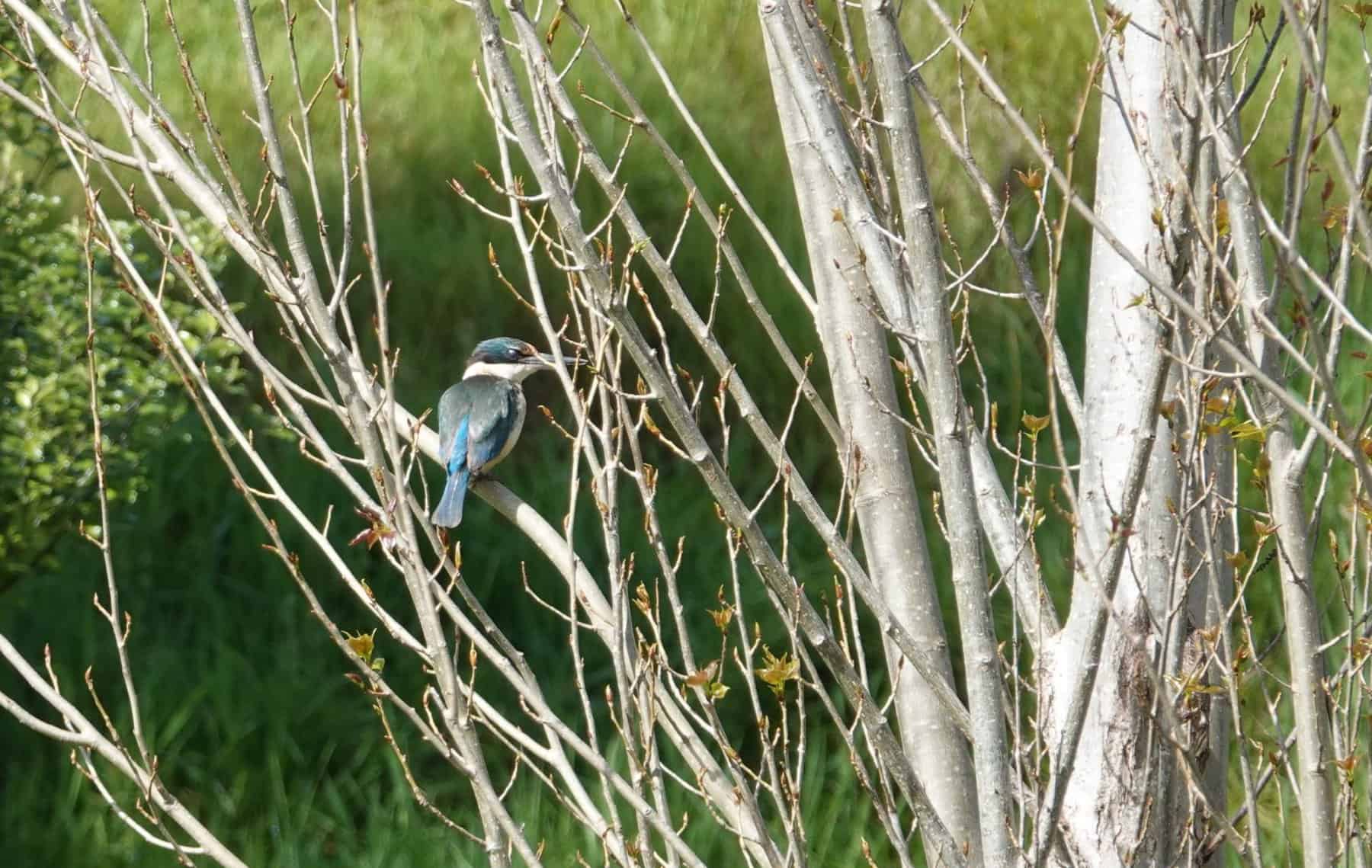Farming & Nature Conservation
Sheep and beef farms make up nearly 40% of Aotearoa’s landscape and play a vital role in our economy. At the same time, this land use is home to a quarter of all native vegetation and so acts as a refuge for many native plant and animal species, especially in the lowlands.
This research is Completed
Photo by Stacey Bryan. Josh Foster and Tim Logan check over native vegetation data from a sheep and beef farm.
Overview Te Tirohanga Whānui
We know that biodiversity can help increase agro-ecosystem resilience and that the biodiversity on sheep and beef farms is often all that remains of the original habitats, but we don’t know what is required to create and support changes in how biodiversity is regarded, protected and managed on farms.
Research Area Summary Te Whakarāpopototanga Kaupapa
- Gain an holistic view, including from a Māori perspective, of how biodiversity is perceived and managed on sheep and beef farms in New Zealand.
- Map the vegetation and associated ecosystem functions on three case-study farms and across the landscapes in which those farms are embedded, to develop tools for land and biodiversity management decision-making.
- Understand the critical roles of biodiversity for agro-ecosystem function and economic and human well-being.
- Quantify native habitat on sheep and beef farms and how it is spatially arranged.
- Determine how biodiversity can be managed in agro-ecosystems in the future, in a way that will benefit both farming and native biodiversity.
Highlights Ngā Mahi Whakahirahira
- Investigation and collation of Māori perspectives of agro-ecosystems.
- Modelling frameworks of bird-plant frugivory, fire hazard, plant-soil water relations and carbon sequestration at farm and landscape spatial scales.
- Development of a “Biodiversity on farms” resource website for farmers.
- Establishment of “Living Laboratory” demonstration sites, investigating how we can most efficiently grow old-growth, canopy trees.
- Modelling the effect of decisions to actively manage on-farm biodiversity on farm profits.
- The mapping of native vegetation and carbon stocks on agro-ecosystems across the country.
Research Partners Ngā hoa pātui rangahau
Resource Outputs from this project
Efforts are being made to upscale restoration of New Zealand’s native ecosystems. Success depends, however, on consideration of several key issues that need to be…
The roles of non-production vegetation in agroecosystems: A research framework for filling process knowledge gaps in a social-ecological context
To fill key research gaps that will inform the use of non-production vegetation to enhance agroecosystem processes, we present a framework for future research that…
Achieving win-win outcomes for pastoral farming and biodiversity conservation in New Zealand
In this article, we explore options to enhance native biodiversity conservation within New Zealand pastoral systems. We argue that there is strong synergistic interdependence between…
Restoring mature-phase forest tree species through enrichment planting in New Zealand’s lowland landscapes
To restore secondary forests, depauperate remnant forests and create new forests that have complex structure, high biomass, and natural canopy tree diversity, mature-phase canopy and…



